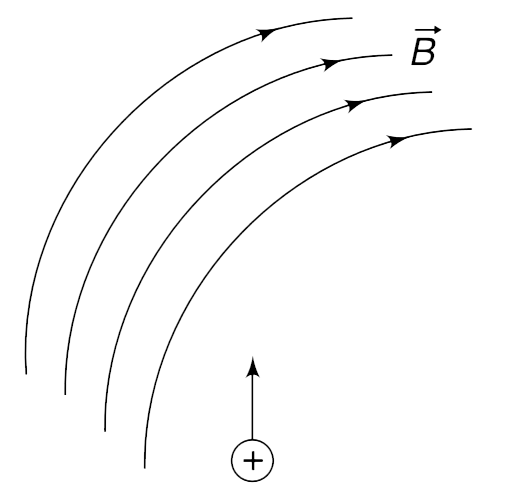Level -1 from ARIHANT PHYSICS Chapter 8 MOTION OF CHARGE IN MAGNETIC FIELD for Class 12
| Class 12 | PHYSICS |
| Chapter | MOTION OF CHARGE IN MAGNETIC FIELD |
| ARIHANT PHYSICS | Level -1 |
| Medium | English |
| Academic Year | 2023-2024 |
Question 1
A linear oscillator (Linac) is a device which accelerates charged particles in a straight line by means of oscillating electric field. S is a source of ion, emitting ions along a straight line (marked as axis) with negligible kinetic energy. The particles travel along a series of co-axial metallic cylindrical electrodes 1, 2, 3, etc. These electrodes are called drift tubes. These tubes are connected to a high frequency oscillator so that alternate tubes have opposite polarities. Thus in one half cycle if tubes 1, 3, 5… are negative then the source (S), tube 2, 4, 6… are positive. After every half cycle the polarities reverse. Assume that there is no electric field inside the metallic tube and the charged particles maintain a straight line trajectory. Find the ratio of lengths of the tubes x1 : x2 : x3... for the device to work
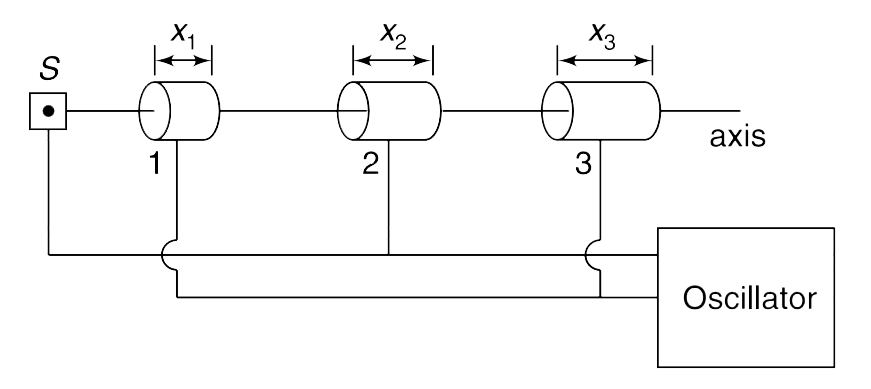 View Solution
View SolutionQuestion 2
A particle of mass m and charge q is projected into a uniform magnetic field −−→B=−B0ˆK with velocity −−→V−V0ˆi from origin. The position vector of the particle at time t is −−→r. Find the impulse of magnetic force on the particle by the time −−→r.−−→V becomes zero for the first time.View SolutionQuestion 3
In a cyclotron the radius of dees is R and the applied magnetic field has a magnitude of B. Particles having charge q and mass m are accelerated using this cyclotron and the maximum kinetic energy that can be imparted to a particle is k.
(a) Find k in terms of R, B, q and m.
(b) If protons and alpha particles are accelerated using this cyclotron which particle (proton or alpha) will gain more kinetic energy?
(c) Can we use a cyclotron to impart very high kinetic energy to an electron?View SolutionQuestion 7
A particle having charge q=10μC is moving with a velocity of V=106m/sin a direction making an angle of 45° with positive x axis in the xy plane (see figure). It expe- riences a magnetic force along negative z direction. When the same particle is projected with a velocity v'=106m/sin positive z direction, it experiences a magnetic force of 10 mN along X direction. Find the direction and magnitude of the magnetic field in the region.
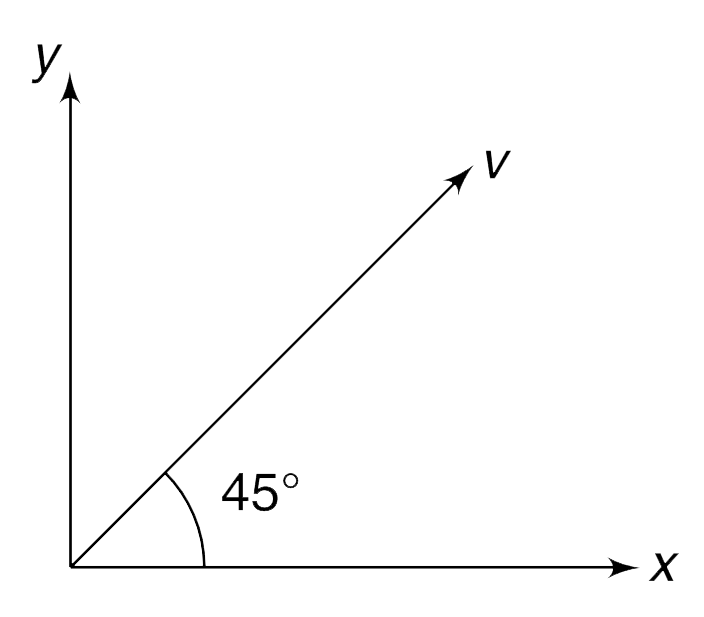 View Solution
View SolutionQuestion 8
A uniform magnetic field exists perpendicular to the plane of the figure and a uniform electric field exists in the plane of the figure in positive y direction. A charged particle, when projected along xy plane moves along the path shown in the figure. Is the particle positively charged or negatively charged?
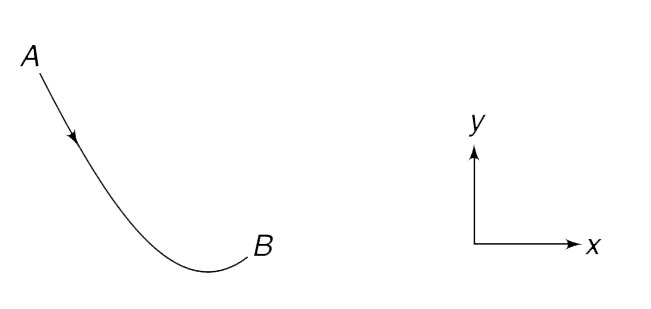 View Solution
View SolutionQuestion 9
Two identical charged particles are projected simul- taneously from origin in xy plane. Each particle has charge q and mass m and has been projected with velocity v as shown in the figure. There exists a uniform magnetic field B in negative z direction.
(i) Find −−→V1.−−→V2at time t where −−→V1and−−→V2 are velocities of the particles at time t.
Find −−→V1.−−→V2 at time t=πmqB where −−→r1.−−→V2are the position vectors of the two particles.
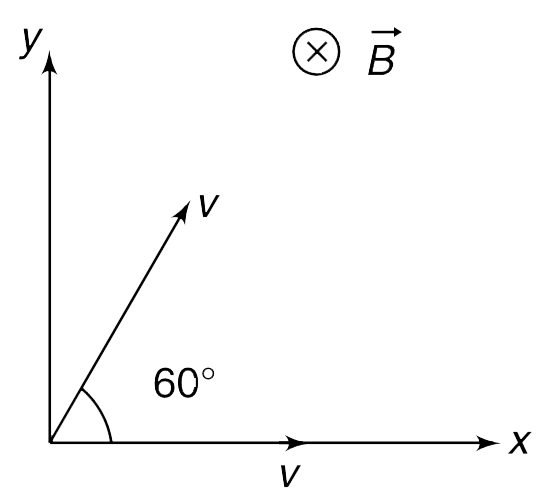 View Solution
View SolutionQuestion 10
A particle having specific charge s is projected in xy plane with a speed V. There exists a uniform magnetic field in z direction having a fixed magnitude B0. The field is made to reverse its direction after every interval of 2πσB . Calculate the maximum separation between two positions of the particle during its course of motion. View SolutionQuestion 12
A region has a uniform magnetic field B along positive x direction and a uniform electric field E in negative x direction. A positively charged particle is projected from origin with a velocity −−→V=V0ˆi+V0ˆj . After some time the velocity of the particle was observed to beV0ˆJ while its x co-ordinate was positive. Write all possible values of EB
 View Solution
View SolutionQuestion 13
A positively charged particle with specific charge σ leaves the origin with a velocity u directed along positive x direction. The entire space has a uniform electric field (E) and magnetic field (B) directed along the positive y direction. Find the angle that the velocity of the particle makes with y direction at the instant it crosses the y axis for nth time. View SolutionQuestion 14
Euipotential surfaces in a region of electric field are shaped as shown in the figure. The potential of field lines is increasing as one moves to right. A thin beam of electrons enters the region from left along the axis. Give qualitative arguments to show that the region will act as an electrostatic lens trying to focus the beam of electrons.
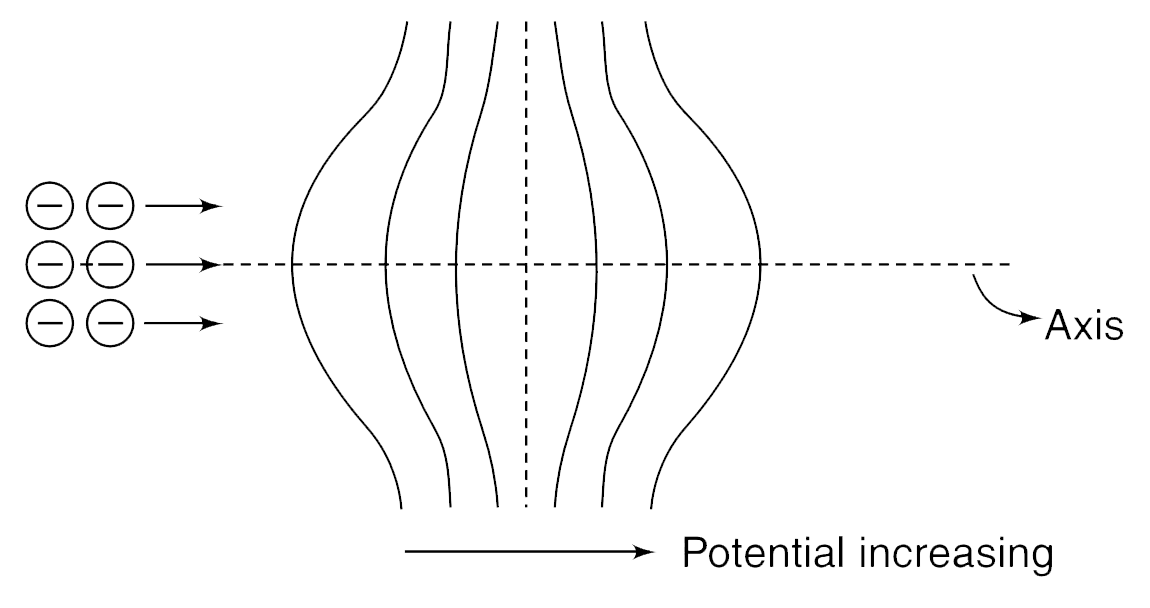 View Solution
View SolutionQuestion 15
Figure shows a circular region of radius R−√3m which has a uniform magnetic field B=0.2Tdirected into the plane of the figure. A particle having mass m=2g, speed v=0.3m/s and charge q=1mC is projected along the radius of the circular region as shown in figure. Calculate the angular deviation produced in the path of the particle as it comes out of the magnetic field. Neglect any other force apart from the magnetic force.
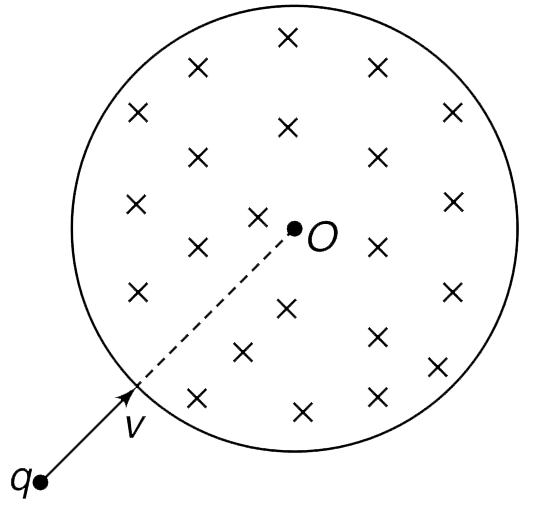 View Solution
View Solution
